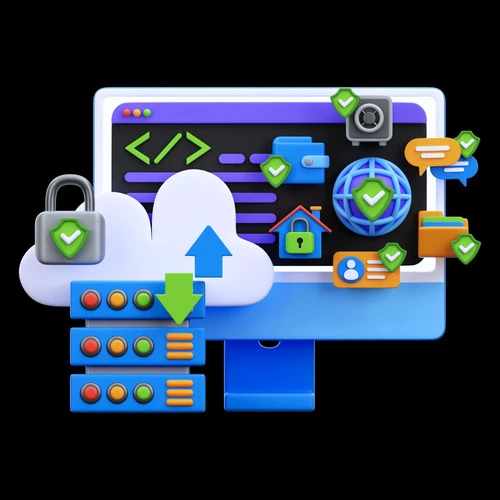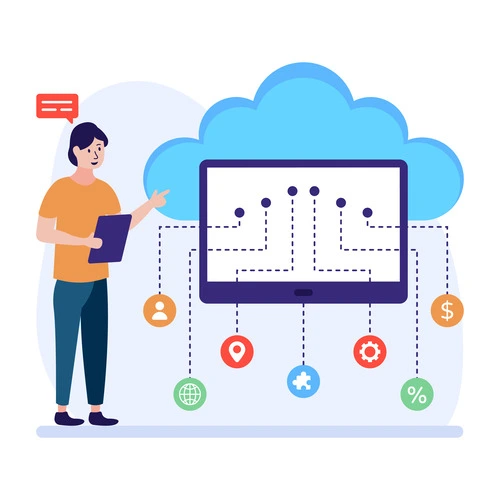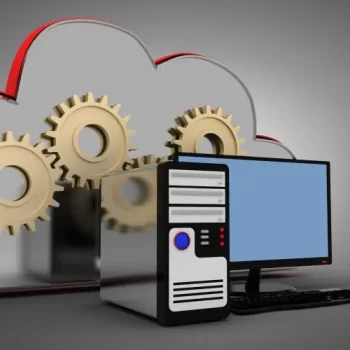Every modern IT and business environment generates an enormous amount of system logs every second. From servers and applications to cloud platforms and security systems, the volume of data continues to grow at an exponential pace. Without a structured approach, managing this flood of logs can quickly become overwhelming.
This is where log aggregation steps in. By consolidating logs from multiple sources into one unified view, organizations gain better visibility, faster troubleshooting, and stronger control over their infrastructure. In this guide, we will explore what is log aggregation, how it works, its benefits, and best practices for implementation.
What is Log Aggregation?
At its core, log aggregation means collecting logs from multiple systems and centralizing them into a single platform. It goes beyond simple log collection by ensuring the data is standardized, searchable, and ready for analysis.
The difference between log aggregation and basic log collection lies in organization and usability. While collection is about gathering raw logs, aggregation ensures they are processed and combined into a usable form.
Why is this important? Modern IT environments are often spread across data centers, cloud services, and distributed applications. Without aggregation, monitoring and troubleshooting become fragmented and inefficient.
Common examples include:
- Web server logs tracking visitor activity and errors
- Cloud infrastructure logs showing resource usage and scaling
- Security event logs capturing login attempts and suspicious behavior
Together, these sources create valuable insights once they are aggregated and analyzed.
How Does Log Aggregation Work?
The process of aggregating logs involves several steps that bring order to scattered data:

- Collection: Logs are first captured from servers, applications, or devices.
- Agents and log shippers: Lightweight programs forward logs to a central aggregation system.
- Normalization: Logs are formatted consistently so they can be compared and searched easily.
- Indexing: Aggregated data is indexed for fast retrieval and queries.
- Central storage: All logs are stored in one secure repository.
- Integration: Logs connect with analysis and monitoring tools for dashboards, alerts, and insights.
Organizations can choose between automated aggregation systems that streamline this workflow or manual setups that require more effort but provide flexibility. Automated approaches, supported by modern log aggregation software, are preferred for their scalability and accuracy.
Common Applications of Log Aggregation
The true value of aggregation is revealed in its applications across different areas of IT and business operations.

- IT operations: Monitor system performance, detect outages, and track resource usage.
- Security: Identify threats, detect intrusions, and investigate suspicious activities.
- DevOps: Gain visibility into CI/CD pipelines to improve deployment reliability.
- Cloud and distributed systems: Provide centralized visibility across complex, multi-cloud environments.
- Compliance: Maintain audit trails and meet regulatory reporting requirements with ease.
By enabling these use cases, log aggregation empowers teams to act quickly and make smarter decisions.
Benefits of Log Aggregation
Adopting a strong log aggregation system delivers a wide range of benefits for organizations of all sizes.

- Unified view: See all data from multiple sources in one place.
- Faster troubleshooting: Pinpoint root causes of incidents quickly and reduce downtime.
- Performance improvements: Monitor resource health and optimize system uptime.
- Stronger security: Detect threats faster with centralized monitoring.
- Scalability: Handle massive amounts of data efficiently as operations grow.
For enterprises, this means fewer disruptions and stronger compliance. For startups, it means gaining clarity and insights without the overhead of managing scattered logs.
Log Aggregation vs Log Monitoring vs Log Management
These three terms are often confused, but each plays a distinct role.
- Log aggregation: Collecting and centralizing logs from multiple systems.
- Log monitoring: Real-time observation of logs with alerts for unusual activity.
- Log management: The broader lifecycle of storing, retrieving, analyzing, and governing logs.
They are interconnected. Aggregation creates a foundation, monitoring provides live visibility, and management ensures control and compliance.
Here’s a simple comparison:
| Aspect | Log Aggregation | Log Monitoring | Log Management |
| Purpose | Collect and centralize | Observe in real time | Full lifecycle |
| Output | Centralized logs | Alerts and notifications | Long-term insights |
| Use Case | Data visibility | Incident detection | Compliance, audits |
Together, they form a complete strategy for smarter IT operations.
Why Log Aggregation is Critical for Your Organization
The ability to centralize and analyze logs impacts not only IT teams but also business outcomes. A strong aggregation system improves efficiency by cutting down manual efforts and provides the insights needed to prevent downtime.
It also accelerates incident response. By having all logs in one place, teams can resolve issues before they escalate. In regulated industries, log aggregation is essential for meeting compliance standards and governance needs.
Consider an example: An e-commerce platform experiences unusual traffic spikes. With effective log aggregation, the IT team identifies the root cause in minutes and prevents a major outage, safeguarding both revenue and customer trust.
Best Practices for Implementing Log Aggregation Systems
To get the most out of log aggregation services, organizations should follow proven best practices:
- Define clear logging and monitoring requirements before setting up.
- Choose the right log aggregation software such as ELK Stack, Splunk, or Graylog based on scale and complexity.
- Ensure proper data formatting and parsing rules for consistent logs.
- Set up centralized dashboards and alerts for real-time visibility.
- Maintain strong security measures for storage and access.
- Regularly review, audit, and optimize aggregation workflows.
This is where Infraon makes a real difference. Infraon provides unified solutions that simplify the process of aggregating logs across IT environments. With its intelligent log aggregation service, organizations can centralize, analyze, and act on data without the usual complexity. Infraon’s platform ensures seamless integration, powerful dashboards, and automated workflows that enhance efficiency, security, and compliance.
Conclusion
The exponential growth of logs is not slowing down. Without a structured approach, businesses risk losing control of valuable data. Log aggregation provides the clarity needed to stay ahead by centralizing and organizing information across systems.
The strategic benefits are clear: operational efficiency, stronger security, faster troubleshooting, and compliance readiness. With solutions like Infraon, implementing a reliable log aggregation system is simpler and more impactful than ever.
Now is the time to explore log aggregation software and services that align with your business needs and set your teams up for smarter data management.
FAQ
Q1. What is log aggregation in simple terms?
It is the process of collecting logs from multiple systems and centralizing them for easier analysis.
Q2. How does a log aggregation system work?
It collects, normalizes, indexes, and stores logs from different sources, often with the help of agents and shippers, making them ready for monitoring and analysis.
Q3. What are the most common use cases for aggregating logs?
They include IT performance monitoring, security threat detection, DevOps visibility, cloud system management, and compliance reporting.
Q4. What’s the difference between log aggregation and log management?
Log aggregation is about centralizing logs, while log management covers the complete lifecycle including storage, analysis, and compliance.
Q5. Which log aggregation services and software are most popular today?
Common options include ELK Stack, Splunk, Graylog, and Infraon, which provides a comprehensive solution for IT and business environments.



















